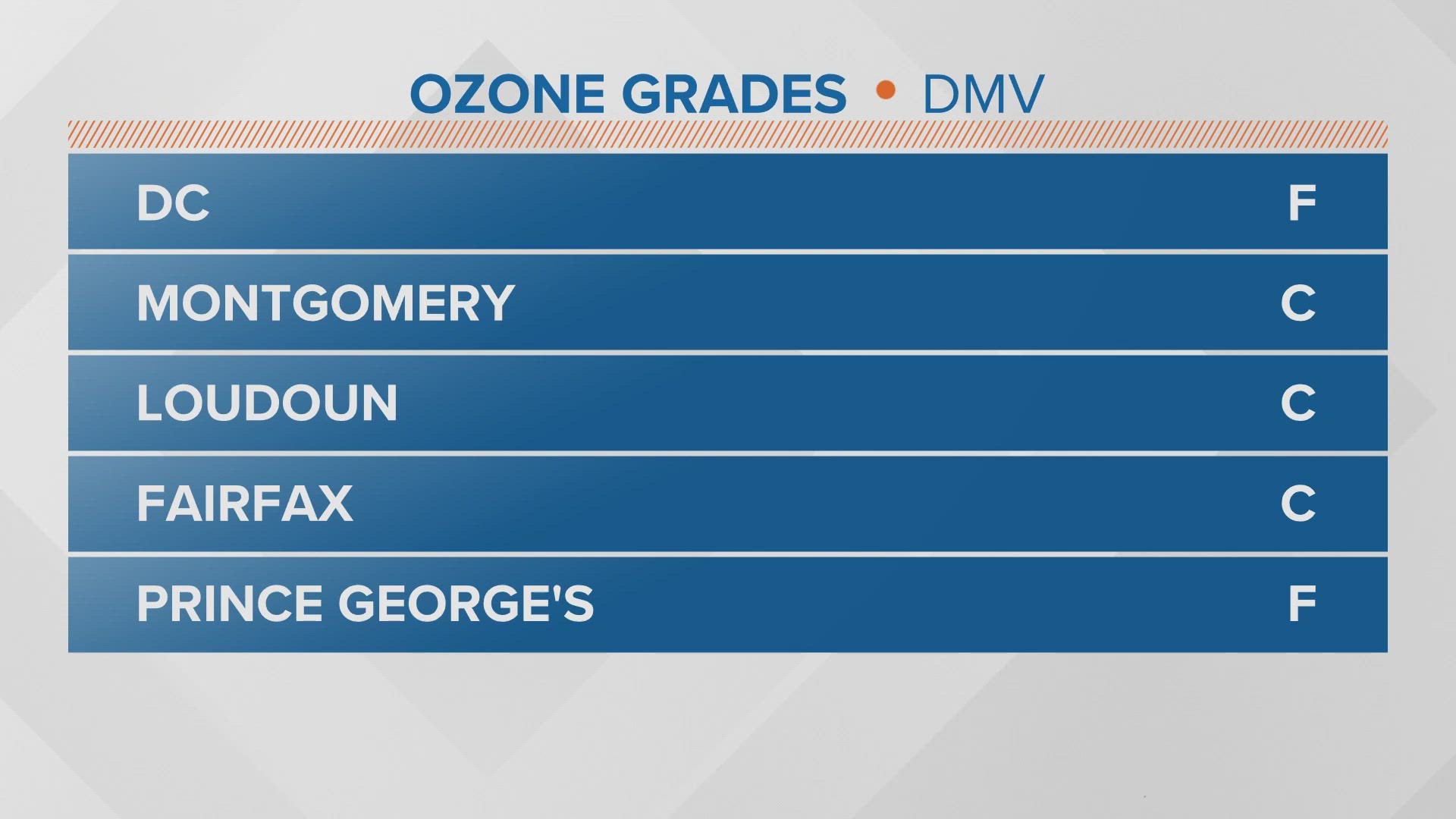WASHINGTON — D.C. has a lot to offer. Great dining, history, museums and attractions. But when it comes to ground-level ozone, the city scores a F with the American Lung Association. The association ranked several parts of the DMV with several regions receiving poor scores.
The American Lung Association's 2023 State of the Air report based the failing score on factors such as the number of days with code orange ozone levels.
Across Northern Virginia, counties included in the report got passing scores with Loudoun, Fairfax and Arlington Counties all getting a score of C.
In Maryland, there were several counties with a failing score, including Prince George's, Baltimore, and Anne Arundel Counties all getting an F. Montgomery County got a C grade.
The data is pulled from air quality reports from 2019, 2020 and 2021.
Dr. Russel Dickerson at the University of Maryland has been tracking air quality for years.
"Ozone episodes — or Los-Angeles-type smog, ground level ozone — is really the number one air quality problem on the large regional scale for Baltimore, Washington. It's the only EPA criteria pollutant that we violate," Dickerson said.
What is ground level ozone?
As summer heats up, ground level ozone, often dubbed the summertime pollutant, makes its way into the air.
Ozone is great up high, but bad nearby. In the stratosphere, ozone protects us from getting too many harmful ultra violet rays from the sun. But at the ground level, it's hazardous to our health. Sunlight and heat help ozone to "cook" in the atmosphere.
The Environmental Protection Agency said nitrogen oxide (NOX) and volatile organic compounds (VOCs) react with sunlight to create ozone. NOX and VOCs come from exhaust from cars, factories, paint and even some trees, such as oak. When exposed to sunlight, the exhaust goes through a chemical change which creates ground level ozone.
Heat speeds up the process. Ground level ozone is more common with a stretch of sunny, hot days and stagnant air.
Health Problems
Ozone can cause coughing and sore throat in anyone. It can also cause the muscles in the airways to constrict, trapping air in the tiny air sacs in the lungs which leads to wheezing and shortness of breath. In children, the EPA found that exposure to ozone can limit lung development and function. For pregnant women, multiple studies have shown that it can lead to preterm birth.
"This is bad for people that have respiratory problems, especially asthma. It's linked to increased morbidity and mortality. And it can cause premature aging of the lungs, so it's a substantial health problem," Dickerson explained.
Climate Change
With warmer temperatures globally, the EPA said we could see more ground level ozone and more poor air quality days.
What can you do?
Experts say staying inside during the hottest part of the day may help reduce your exposure to ozone. The Centers for Disease Control and Protection says ozone levels are usually lower indoors. Morning and evening are best for outdoor activities. If you do go out, the CDC recommends that you do something like walking instead of running, so that you don't breath as hard.
Ozone air pollution has shown some signs of improvement. Since 1996, the region has seen about 76 fewer days of ozone air pollution.

